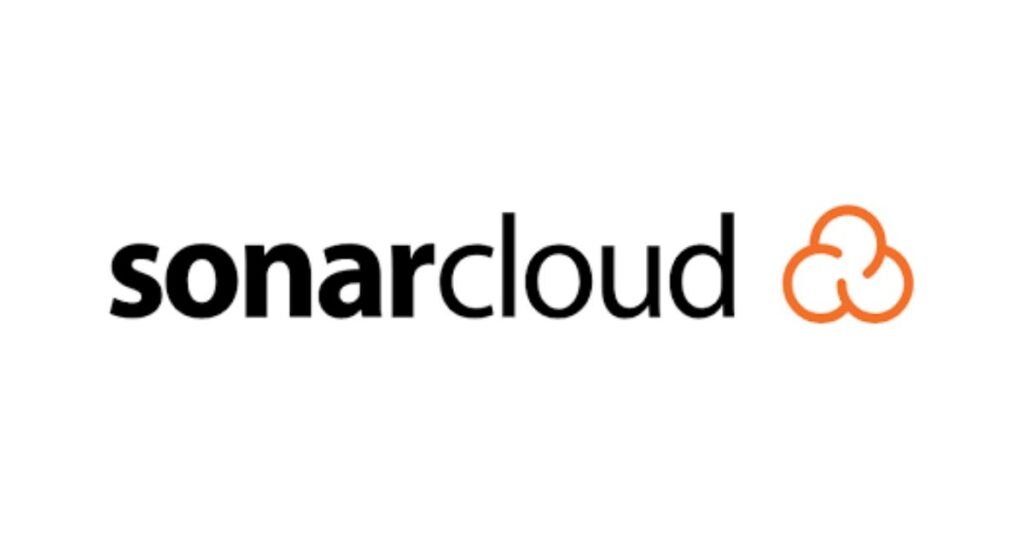SonarCloud Explained: Key Features, Benefits, and How It Works

In modern-day DevOps workflows, maintaining code quality is essential. Early in the development process, developers can find bugs, vulnerabilities, and code smells with the aid of SonarCloud, a cloud-based static analysis and code review tool from SonarSource. In order to create better, more secure software, this fully managed SaaS solution automatically scans your code with each commit or pull request, giving you “actionable code intelligence.” SonarCloud enforces clean code practices without slowing down your team by integrating easily with CI/CD pipelines and well-known development platforms (GitHub, GitLab, Azure DevOps, etc.).
SonarCloud: What is it?
SonarCloud is a cloud-based code quality and security service that automatically analyzes your source code to identify bugs, vulnerabilities, and code smells. It integrates with popular DevOps platforms like GitHub, Bitbucket, GitLab, and Azure DevOps, helping developers and teams ensure clean, maintainable, and secure code throughout the development lifecycle.
In essence, SonarCloud is SonarQube on the cloud. This industry-standard SaaS code review and static analysis tool is made to examine your source code, which includes infrastructure-as-code and more than 30 programming languages. In actuality, SonarCloud automatically examines each branch and pull request after you connect it to your code repository. On every merge, it enforces your quality gates and flags problems (bugs, security flaws, and code smells).
For instance, SonarCloud (now known as SonarQube Cloud) is described in SonarSource’s documentation as a service that verifies code for security, dependability, and maintainability with every pull request. To put it briefly, SonarCloud integrates automated code review into your development process to assist teams in producing cleaner, more maintainable code.
SonarCloud Features
SonarCloud offers a wide range of features to make code reviews and analysis more efficient:
Automatic Code Analysis: SonarCloud requires “no extra configuration needed for most languages” to begin analyzing code right away. SonarCloud performs a scan and provides immediate results as soon as you connect a repository.
More than 30 languages are supported, including Java, JavaScript, TypeScript, Python, C#, C/C++, PHP, Kotlin, Go, and many more. Your entire codebase can be covered by a single tool thanks to its wide language support.
Pull Request Analysis (PR Decorators): To examine modifications to pull requests, SonarCloud has native integrations with GitHub, Bitbucket, GitLab, and Azure Repos. To help developers identify problems before merging, it “automatically performs static analysis on the entire code and provides feedback directly within the pull request.”
DevOps Platform Integration: You can import projects in a matter of minutes thanks to one-click integration with the main DevOps platforms. Analysis is integrated into your regular build/release process thanks to SonarCloud’s compatibility with GitHub Actions, Azure Pipelines, Bitbucket Pipelines, GitLab CI, and more.
Quality Gates: “go/no-go” quality gates can be defined. If your code doesn’t adhere to specified standards, SonarCloud will fail the pipeline (e.g., too many bugs or low test coverage). This prevents shoddy code from being deployed or merged.
Issue and Security Detection: SonarCloud’s engine scans your code for errors, weaknesses, and code smells. SAST rules and security hotspots are even included to identify vulnerabilities (in both developer-written and AI-generated code). Teams can assign and monitor fixes for issues that are grouped by type and severity on a collaborative dashboard.
Integration of Test Coverage: SonarCloud highlights untested code sections by importing code coverage reports (from programs like JaCoCo, Istanbul, etc.). You will be able to see precisely which sections of your code are devoid of unit tests.
Technical Debt Metrics: It shows the locations of debt accumulation and computes technical debt, or the estimated amount of work required to resolve problems. This aids teams in giving refactoring top priority in order to maintain the health of the codebase.
Cloud-Native Convenience: SonarCloud requires no infrastructure from you because it is fully managed. It is always current and scales automatically. SonarSource takes care of all upgrades and uptime, so you never have to worry about server maintenance.
Advantages of SonarCloud

There are numerous tangible advantages to using SonarCloud in your development process:
Improved Code Quality: SonarCloud results in “enhanced software quality” by identifying bugs, security vulnerabilities, and code smells early. Teams that receive ongoing feedback are able to address problems promptly, producing code that is cleaner and easier to maintain.
Decreased Technical Debt: SonarCloud reveals bad coding habits and accrued debt. Teams are able to “recognize and handle technical debt” before it becomes unmanageable thanks to this. You’ll notice stronger, less brittle code over time.
Faster Code Reviews: Developers can eliminate manual inspections by automating static analysis. Reviewers receive a prioritized list of issues rather than going through the code line by line. Teams can “significantly save time” and concentrate on new features as a result of this collaboration.
Consistent Standards: All team members view the same metrics thanks to a shared quality dashboard. SonarCloud guarantees that security guidelines and coding standards are applied consistently throughout projects. This consensus “promotes a common comprehension of quality metrics.”
Simplified DevOps: SonarCloud seamlessly integrates with your CI/CD pipeline thanks to native integration. As a result, builds are not slowed down, and code quality is continuously monitored. One user pointed out that because SonarCloud automates routine checks, teams can “redirect efforts toward innovating.”
All things considered, SonarCloud allows teams to see and manage the health of their code. When SonarCloud is implemented in the real world, companies report quicker releases and fewer bugs after the release. It makes sure that DevOps teams follow clean-code guidelines.
How Does SonarCloud Operate?
SonarCloud operates by blending in perfectly with your current development process. A typical workflow is as follows: the CI pipeline initiates a SonarCloud scan after a developer pushes or creates a pull request in GitHub, Bitbucket, or GitLab.
The source code is sent to SonarCloud by the SonarQube Scanner, a tool that your build runs. After that, SonarCloud completes its analyses, looking for errors, security flaws, duplicates, coverage gaps, etc., and posts the findings to your SonarCloud dashboard. For speedy triage, any problems (or failures of the quality gate) are immediately fed back into the pull request.
SonarCloud in a CI/CD pipeline: developers push code, a CI build runs SonarCloud Scanner, SonarCloud analyzes the code and flags problems, and pull requests display the feedback.
SonarCloud collects and measures metrics during this process. It keeps track of past data so you can observe quality trends over time. Analysis can be completed in a matter of minutes because SonarCloud is always online, and the code health dashboard is accessible to anybody with access. Your codebase continuously gets better with this “clean as you code” method, which protects it from new problems with each merge.
How to Begin Using SonarCloud

SonarCloud is easy to get started with:
Register: Visit sonarcloud.io and sign in with your Azure DevOps, Bitbucket, GitLab, or GitHub credentials. SonarCloud is thus linked to the projects associated with that account.
Establish an Organization: Select a plan and, if necessary, establish a new organization in SonarCloud. For individuals and small teams, there is a free plan (see below).
Include a Project: Choose or import a repository for analysis. Public projects can be automatically scanned by SonarCloud, or you can grant it access to your private repository.
Set Up Your Build: SonarCloud will provide you with some setup guidelines. Usually, your CI pipeline or YAML file needs to include a project key and token (an environment variable like SONAR_TOKEN). For tools like Gradle, Maven, or SonarScanner CLI, SonarCloud offers a pre-made CI snippet or Scanner command. For instance, you add a Sonarcloud_check job in GitLab using your SONAR_HOST_URL and SONAR_TOKEN variables along with the SonarScanner image.
Conduct an Analysis: Either start a build or commit and push your code. The results of the SonarScanner will be run and uploaded. View the quality report on your SonarCloud dashboard in a matter of minutes.
Review Results: SonarCloud will categorize issues. Establish a quality gate, such as “no new blocker bugs.” Developers will now see SonarCloud’s comments or status checks enforcing those gates on every pull request.
For instance, one tutorial demonstrates that you add a sonar analysis step to your CI script after logging in and creating an organization. You also set your repository’s SONAR_HOST_URL (typically https://sonarcloud.io) and SONAR_TOKEN as CI variables. Once configured, each push is automatically analyzed, making it largely automated.
SonarCloud’s free tier permits an unlimited number of open-source projects and up to 50,000 lines of code in private projects. For the majority of small to medium-sized projects, this is typically sufficient. Paid plans offer additional users, languages, or enterprise features for larger teams. However, a lot of teams begin with the free plan and upgrade as necessary.
SonarCloud is a straightforward cloud-based solution that gives every team access to enterprise-grade code analysis. It enforces coding standards, detects errors and vulnerabilities early, and seamlessly integrates with your DevOps process. Cleaner, safer code and a more efficient development process are the outcomes.
SonarCloud’s “automatic analysis” and quality gates help guarantee that only high-quality code advances, regardless of whether you’re working on an open-source project or a commercial codebase. As part of their CI/CD pipeline, companies can enable developers to “write clean code” and continuously enhance software quality by implementing SonarCloud.
How DevTools Can Help with SonarSource Implementation
It can occasionally be difficult to integrate a strong code quality platform like SonarCloud or SonarQube throughout an organization, particularly when dealing with big codebases or intricate CI/CD pipelines. DevTools and other knowledgeable partners are useful in this situation. As a Gold Partner of SonarSource, the company that created SonarQube and SonarCloud, DevTools is a SonarSource Gold partner. By achieving Gold Partner status with SonarSource, the market leader in code quality and security solutions, DevTools has actually improved its DevSecOps offerings.
DevTools, a SonarSource partner, can help businesses deploy SonarCloud or SonarQube from start to finish:
Planning and Consultation: By learning about your projects, workflows, and objectives, DevTools can assist you in deciding which SonarSource product best suits your requirements (SonarCloud vs. SonarQube, Community vs. Enterprise editions, etc.). They will offer best practices for establishing quality gates, regulations, and metrics that complement your company’s goals.
Deployment and Integration: DevTools can assist with the installation, configuration, and scaling of SonarQube (self-hosted), including the setup of SonarQube in databases, enterprise environments, and other settings. They help you properly integrate SonarCloud with your CI pipelines and source repositories. This entails setting up pull request decoration and configuring build pipelines (Jenkins, Azure DevOps, GitHub Actions) to incorporate Sonar scans. In essence, they guarantee a smooth and frictionless integration of the tool into your DevOps workflow.
Customization: Each team may have particular standards for quality. DevTools specialists assist in tailoring quality gates and rule sets (quality profiles) to your team’s coding standards and risk tolerance. DevTools can set Sonar up to enforce more stringent security rules, for example, if a finance software team requests it. In order to get the most accurate results for your codebase, they also offer advice on how to handle false positives and adjust the analysis.
Training & Best Practices: Enlisting developers is a crucial component of a successful adoption. To assist your developers and DevOps engineers in comprehending SonarCloud/SonarQube features, DevTools can hold workshops and training sessions. They will go over how to use SonarLint in daily coding, how to read Sonar reports, and how to resolve problems efficiently. DevTools guarantees that your company genuinely adopts a “quality code” culture and clean code practices by upskilling your staff.
After initial setup, DevTools can offer support services to troubleshoot any issues that may come up, check the health of your SonarQube server (if self-hosted), and maintain your configuration optimized as your codebase develops. They can help you upgrade or modify your configuration to take advantage of new features (like new security rules or support for new languages) and stay up to date with the most recent SonarSource updates.
Integration with DevSecOps Toolchain: A lot of companies have a collection of DevSecOps tools, such as CI servers and issue trackers. Because of its expertise in the DevSecOps space, DevTools can assist in integrating Sonar’s outputs with other procedures. For example, it can assist in creating dashboards that integrate Sonar metrics with other project metrics or in feeding Sonar issues into JIRA tickets. This all-encompassing strategy guarantees that SonarCloud/SonarQube is a well-integrated component of your software delivery pipeline rather than a stand-alone tool.
DevTools essentially supports you as you implement continuous code quality. Their knowledge can help you steer clear of typical pitfalls and save your team time during setup. Organizations can expedite the deployment and uptake of SonarCloud/SonarQube and begin enjoying the advantages of cleaner, safer code right away by utilizing a SonarSource Gold Partner like DevTools.
Commonly Asked Questions
What is the purpose of SonarCloud?
SonarCloud is used to enforce quality and perform automatic source code analysis. It checks code for errors, security flaws, odors, and gaps in test coverage. By identifying problems in pull requests before they are released into production, developers utilize it to guarantee code security and quality as part of the development process.”
What distinguishes SonarCloud from SonarQube?
The same analysis engine is offered by SonarQube and SonarCloud; however, SonarQube is usually self-hosted (on-premises or in your own cloud), while SonarCloud is a fully-managed SaaS. SonarCloud only needs to be pointed at your repository; there is no setup or upkeep involved. As stated in the SonarSource documentation, “SonarCloud is now known as SonarQube Cloud.” In terms of functionality, SonarCloud offers the benefits of constant updates and simpler scalability, whereas SonarQube (server) provides greater control and options for on-site deployment.
What is the function of SonarQube?
The platform that does static code analysis is SonarQube, which can be used on-premises or in the cloud. It checks each pull request and your codebase against hundreds of coding rules. SonarQube (and SonarCloud), according to SonarSource, “deliver powerful static code analysis by thoroughly reviewing each pull request before it’s merged,” guaranteeing code quality and keeping problems out of the codebase. In essence, SonarQube assists teams in enforcing clean code practices by highlighting issues in code and measuring code quality metrics.
Is SonarCloud a software as a service?
Indeed. SonarSource offers a Software-as-a-Service called SonarCloud. It is entirely cloud-managed. SonarCloud is a “SaaS solution for high-quality code,” according to Sonar’s own website. Easy, scalable, and quick. This implies that you use it online and don’t need to install it locally.
Does SonarCloud have no cost?
For small and open-source projects, SonarCloud provides a free plan. In particular, the free tier permits an unlimited number of public (open source) projects and the analysis of private projects up to 50K lines of code. SonarCloud offers paid subscriptions for teams that go beyond these restrictions or require more sophisticated features (such as additional users, languages, or enterprise support). However, a lot of users find that the free plan is enough to immediately begin enhancing code quality.




